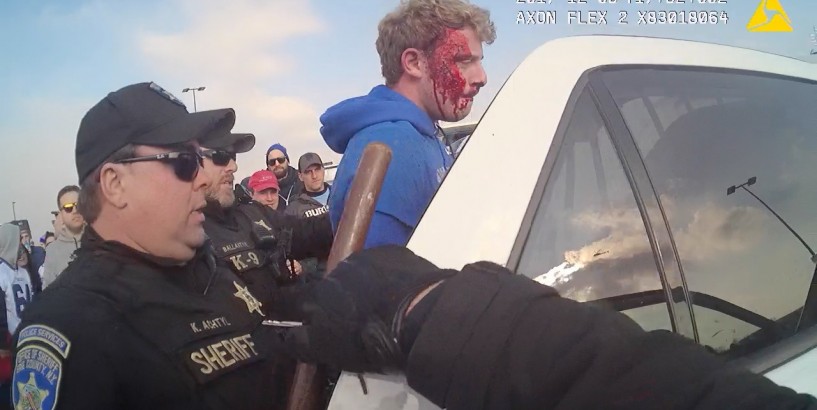One video documenting a police officer’s use of deadly force appears to justify the officers involved. Another video in a different confrontation all but convicts a law enforcement officer of willful brutality. Together, the recordings underscore the urgent need, by both police and Western New Yorkers residents who depend upon professional policing, for all officers to be equipped with body cameras.
Yet they still aren’t. Both Buffalo Police and the Erie County Sheriff’s Department are conducting trials with the cameras, and while Buffalo’s examination seems to be progressing, Sheriff Timothy B. Howard says adopting them “isn’t my highest priority.”
As many people have already seen through video recorded by a body camera and onlookers’ devices, Deputy Kenneth P. Achtyl last year assaulted a man whose only offense was to curse at the deputy. Cursing at a law enforcement officer is unwise and certainly impolite, but it isn’t illegal; beating the stuffing out of anyone without cause surely is.
Achtyl’s recorded attack on Nicholas H. Belsito outside of a Bills game left his victim with a broken nose and a bloodied face. Achtyl has not been charged with any crime, though surely anyone else would be hauled in after the kind of assault recorded by another deputy’s body camera. Now, District Attorney John J. Flynn is reviewing reports filed by two deputies to see if they misrepresented what happened.
Howard’s explanation for not embracing the use of body cameras is outrageous. He told an Erie County Legislature committee meeting the fact that the video footage contradicted the deputies’ account of Belsito’s arrest “set us back” when it comes to using the cameras.
Getting to the facts is the whole reason for using body cameras, not an excuse to shy away from them.
In another case, security video clearly shows that the man a Buffalo police officer fatally shot in September was armed and holding onto the weapon, despite orders police say they gave to drop it. Less clear is whether the man turned toward police, putting them at risk.
Flynn has other video that is reported to show more clearly what happened, but he has refused to make it public. That’s unfortunate, since his decision not to press charges suggests there is nothing to hide.
Nevertheless, it is reasonable to believe the officers had reason to fear for the safety of themselves and of others. And a man with a loaded gun, running from police and disobeying orders to drop the weapon, knows he is putting himself at risk.
It’s a case where video supports the actions of officers, but it is simply happenstance that the event was captured by privately owned surveillance video. Without that evidence, police might well have struggled to justify the shooting.
Despite more than a year’s trial run, Howard has made no effort to secure funding for a formal program. That should trouble professionals in his department, county legislators and citizens who understand the need to protect good cops and identify those who aren’t.
Why leave it up to chance when technology will help to protect good officers from false accusations and identify those who cannot be trusted? An appropriately regulated policy on body cameras should be seen as standard equipment for 21st century police.









